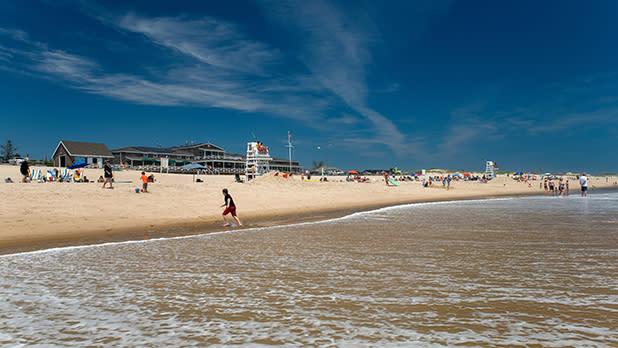Six New York state beaches have been closed for swimming following recent algae blooms and heavy rainfall, health officials announced Monday. The closures come as part of ongoing efforts to protect public health amid concerns over water quality and potential hazards linked to harmful algae and storm runoff. The affected beaches span several regions, prompting swimmers and visitors to stay informed before heading to the shore. Below is the full list of the beaches currently closed and updates on the conditions leading to these restrictions.
NY State Beaches Closed for Swimming Amid Algae Blooms and Heavy Rainfall
Several popular swimming spots across New York State have been temporarily closed as officials respond to recent environmental concerns. The closures come amid reports of harmful algae blooms intensified by an influx of heavy rainfall, creating unsafe conditions for swimmers. The affected beaches have been flagged to protect public health, as exposure to the algae can cause skin irritations, respiratory issues, and other health complications.
Beaches currently closed include:
- Canandaigua Lake Beach
- Hamlin Beach State Park
- Robert Moses State Park Beach
- Golden Beach, Irondequoit Bay
- Sunrise State Park Beach
- Green Lakes State Park Beach
| Beach | Closure Reason | Estimated Reopening |
|---|---|---|
| Canandaigua Lake Beach | Algae Bloom | Mid July |
| Hamlin Beach State Park | Heavy Rain Runoff | Late June |
| Robert Moses Park | Algae Bloom | End of July |
Health Risks Associated with Algal Contamination in Recreational Waters
Exposure to water contaminated by harmful algal blooms (HABs) can cause a range of adverse health effects. These blooms often produce toxins that pose significant threats to both humans and animals. Swimmers and others who come into contact with affected water may experience symptoms such as skin irritation, respiratory issues, and gastrointestinal distress. Children and individuals with pre-existing health conditions are particularly vulnerable to these toxins, which can exacerbate allergies or asthma. Ingesting contaminated water, either accidentally or through aquatic activities, increases the risk of nausea, vomiting, and even liver damage in severe cases.
Health officials advise avoiding direct contact with discolored or scummy water and recommend keeping pets away from contaminated areas, as animals can also suffer from poisoning after drinking or swimming in toxic waters. Below is a brief overview of common symptoms linked to exposure:
- Skin rash and irritation
- Eye and throat irritation
- Coughing and wheezing
- Diarrhea and abdominal pain
| Type of Exposure | Potential Symptoms | At-Risk Group |
|---|---|---|
| Skin Contact | Rashes, itching | Swimmers, Children |
| Inhalation | Coughing, breathing difficulty | Athletes, Asthmatics |
| Ingestion | Nausea, liver issues | All ages |
Safety Guidelines and Alternative Recreation Options for Affected Visitors
Visitors planning to spend time at New York’s coastal areas are strongly advised to avoid swimming at the affected beaches until further notice. Exposure to harmful algae blooms or contaminated rainwater runoff can lead to skin irritation, respiratory issues, and other health risks. Lifeguards and local authorities recommend following posted signage and reports from health departments before entering the water. Parents should closely supervise children, and pets should be kept away from the beach water to prevent possible illness.
For those looking to enjoy the outdoors while safer water access is limited, consider the following recreational alternatives:
- Visit nearby parks with walking trails and picnic areas
- Explore freshwater lakes known to be clear of contamination
- Engage in beach volleyball or other sand-based activities away from the shoreline
- Take advantage of local community pools that maintain regular water quality testing
| Alternative Location | Type | Distance from Closed Beaches |
|---|---|---|
| Irondequoit Bay Park | Lake/Park | 5 miles |
| Charlotte Beach Boardwalk | Beach Walk | 8 miles |
| Genesee Valley Park | Park/Recreation Area | 10 miles |
| Rochester Community Pool | Indoor Pool | 7 miles |
The Way Forward
As authorities continue to monitor water quality across New York State, swimmers are advised to stay informed about beach closures and avoid entering affected waters to protect their health. Updates on reopening timelines will be provided as conditions improve. For the latest information and safety guidelines, residents and visitors should consult official state and local health department resources.





